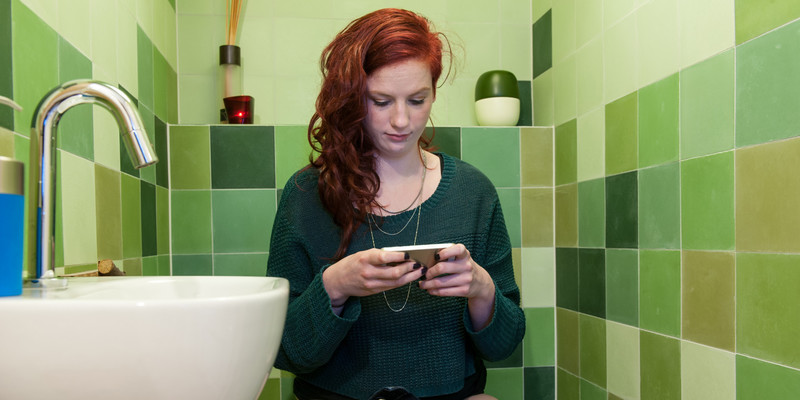01 Jul 2019 - Jason Williamson

I can see it now. You’re on the toilet, and may be for a while. You’ve read the newspaper; your books next to the bed and a dash to the other room is out of the question. What to do?
Your trusty smartphone?
Come on, what use is it to you within those four walls? The rooms basically a signal prison. And your phones serving life! Oh if only you could stream an episode of Friends and have a right old giggle? Wouldn’t that be lovely.
A good television advert it may not be, but it is unfortunately typical of the trials and tribulations of 21st century living. Modern ‘data monsters’ – I for one fall well and truly into this category - require access to everything, everywhere and want it NOW. We don’t want to buffer. Luckily for us it seems that the telecommunication industry is forging a way for you to access all the clips of juggling dogs on YouTube you could ever need. Wherever you are. One small Lampsite at a time.
If you are new to the technology, the idea is pretty simple. The reason you struggle to get a signal indoors is that the phone you are using, and the base station which it is ‘talking’ to, communicate best when the radio waves travel unimpeded. When you’re inside a building the bricks, mortar and metal quite simply get in the way. I am sure we have all at one time in our lives found ourselves hanging out of a window just to finish a call. Luckily for us the ‘Lampsite Technology’, which was first brought to our attention in late 2013, works as a facilitator of sorts. It ‘’pushes’’ the LTE, UMTS and GSM signals through the obstacles between you, the person on the toilet, and the tower. Simple.
To date Beijing International Airport has been the largest scale recipient of the technology, and it seems that slowly but surely it will be coming to a mall near you. MTN in South Africa committed 10% of their 12 billion RAND investment for 2015 to such ‘small cell’ solutions, clear proof that the industry is tailoring their MBB offerings to cater for a new ‘internet savvy’ generations need for speed. You can now find shopping centres across Johannesburg that boast you can shop* (*and stream anything you want) till you drop. Does life get any better than that? Yes it does. The designers of the solution claim that it also creates low carbon emissions so you can surf with a clear conscience. That does slightly depend on what you are watching… ‘’but who am I to judge’’ – he says deleting his internet history. This is progress for us the consumer and it should be celebrated.
A more important question is likely to be whether this technology can ever be scaled down to allow residential areas to benefit? If Jessica Li, Director of wireless marketing at Huawei, is to be believed (and I have no reason to believe she should not) the solution can ‘’increase coverage by as much as 40% and speeds by more than 50% indoors’’. I can’t help but wonder whether the demand for this advancement to be made available to us in the comfort of our own homes will come too soon for the technologists to keep up? What will be the costs for the industry operators to make this a reality? And who will pick up the cheque?
This will be the key question that will be keeping telco strategists awake at night the world over. Let’s hope they find a way to make it possible without an increase in tariffs for the consumers.
On a final note, a study by Global Wireless Solutions in the UK discovered that your kitchen is likely to be the room in your house with the worst signal. For the life of me I cannot think why this would be the case, but there it is. Do with it as you wish.
comments powered by Disqus